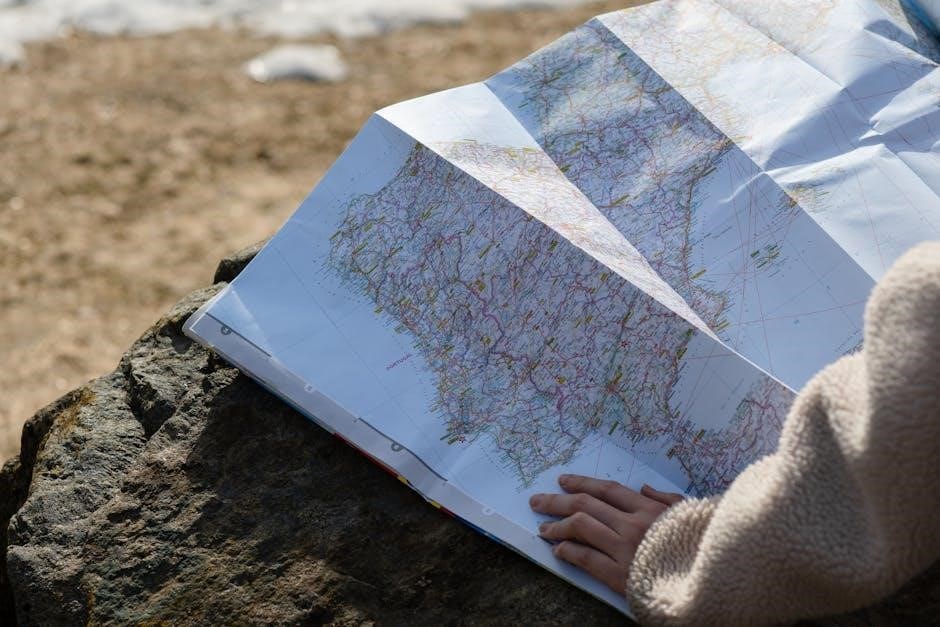bsa troop guide
BSA Troop Guide: A Comprehensive Guide
The Troop Guide is a pivotal role within a Scouts BSA troop. This experienced Scout helps new members transition smoothly into troop life. They introduce operations, prevent harassment, and guide scouts toward achieving First Class rank. The Troop Guide also mentors the new-scout patrol leader.
The Troop Guide position in a Scouts BSA troop is a crucial leadership role, typically held by an older Scout possessing a strong understanding of Scouting principles and troop operations. As a mentor and facilitator, the Troop Guide bridges the gap between Cub Scouting and Scouts BSA, ensuring a smooth transition for new Scouts joining the troop. The Scout way is much different from the Cub Scout way of doing things, and Troop Guides are responsible.

The primary focus of the Troop Guide is to support and guide new Scouts as they acclimate to the troop environment. This involves introducing them to troop traditions, procedures, and expectations, as well as providing guidance on basic Scouting skills and advancement requirements. The Troop Guide serves as a friendly face and a reliable resource for new Scouts who may feel overwhelmed or uncertain about their place in the troop.
Furthermore, the Troop Guide plays a vital role in fostering a positive and inclusive troop culture. They actively work to prevent harassment or hazing of new Scouts by older members, ensuring that all Scouts feel safe, respected, and valued. By setting a positive example and promoting the Scout Oath and Law, the Troop Guide contributes to a welcoming and supportive environment for all.
Responsibilities of a Troop Guide
The Troop Guide’s responsibilities are multifaceted, encompassing mentorship, instruction, and leadership. A core duty is introducing new Scouts to troop operations, helping them understand how the troop functions, from meetings to campouts. This involves explaining troop traditions, demonstrating proper procedures, and answering any questions the new Scouts may have. The Troop Guide ensures the new Scouts feel comfortable and integrated into the troop.
Another key responsibility is guiding new Scouts through early Scouting activities. This includes teaching basic Scout skills such as knot-tying, first aid, and outdoor cooking. The Troop Guide also helps new Scouts navigate advancement requirements, providing guidance on completing merit badges and earning rank advancements. This support is crucial in helping new Scouts achieve First Class rank within their first year, a significant milestone in their Scouting journey.
Shielding new Scouts from harassment is a paramount responsibility. The Troop Guide must be vigilant in preventing any form of hazing or bullying, ensuring a safe and respectful environment. They also play a role in coaching the new-scout patrol leader, advising them on their duties and responsibilities within the Patrol Leader Council (PLC).
Introducing New Scouts to Troop Operations
Introducing new Scouts to troop operations is a critical task for the Troop Guide, setting the foundation for their successful integration into the troop. This involves providing a comprehensive overview of how the troop functions, ensuring new Scouts understand the structure, rules, and expectations.
The Troop Guide begins by explaining the troop’s organizational structure, including the roles of various leaders such as the Senior Patrol Leader, Assistant Senior Patrol Leader, and Patrol Leaders. They clarify how the Patrol Leader Council (PLC) operates and how decisions are made within the troop. New Scouts are introduced to troop traditions, such as opening and closing ceremonies, flag etiquette, and specific troop cheers or songs.
Furthermore, the Troop Guide provides practical guidance on participating in troop meetings, campouts, and service projects; They explain the importance of following the Scout Oath and Law, emphasizing ethical behavior and respect for others. New Scouts learn how to sign up for events, pack their gear, and contribute to the troop’s overall success. The Troop Guide answers questions and addresses concerns, ensuring new Scouts feel comfortable and confident in their ability to navigate troop life.
Guiding New Scouts Through Early Scouting Activities
Guiding new Scouts through early activities is a vital role for the Troop Guide, providing hands-on support and mentorship as they experience Scouting firsthand. This involves actively participating with new Scouts in troop meetings, campouts, and service projects, helping them learn essential skills and build confidence.

The Troop Guide assists new Scouts in mastering basic Scouting skills such as knot tying, fire building, and first aid. They provide demonstrations, offer personalized instruction, and encourage practice, ensuring new Scouts develop proficiency. During campouts, the Troop Guide helps new Scouts set up their tents, prepare meals, and navigate the outdoors, fostering a sense of self-reliance and teamwork.
Furthermore, the Troop Guide facilitates new Scouts’ participation in service projects, teaching them the importance of giving back to the community. They explain the project’s purpose, guide them through the tasks, and emphasize the impact of their efforts. The Troop Guide acts as a positive role model, demonstrating enthusiasm, responsibility, and a commitment to the Scout Oath and Law. By providing ongoing support and encouragement, the Troop Guide helps new Scouts feel valued and empowered, setting them on a path to success in Scouting.

Shielding New Scouts from Harassment
Protecting new Scouts from harassment is a critical responsibility of the Troop Guide. Recognizing that older Scouts might unintentionally or intentionally create uncomfortable situations for newcomers, the Troop Guide acts as a vigilant guardian, ensuring a safe and welcoming environment for all. This involves proactively monitoring interactions between new and older Scouts, intervening when necessary to address any instances of teasing, bullying, or hazing.
The Troop Guide must establish clear expectations for respectful behavior, emphasizing the importance of treating all Scouts with kindness and consideration. They should be approachable and accessible, encouraging new Scouts to report any concerns or incidents of harassment without fear of retaliation. When a complaint is received, the Troop Guide must take it seriously, investigating promptly and thoroughly.
Appropriate action should be taken to address the harassment, which may include counseling the offending Scout, involving the Scoutmaster, or implementing disciplinary measures. The Troop Guide must also provide support and reassurance to the new Scout who experienced the harassment, helping them feel safe and valued within the troop. By actively shielding new Scouts from harassment, the Troop Guide fosters a positive troop climate where all members can thrive.
Helping New Scouts Achieve First Class Rank
A primary objective of the Troop Guide is to assist new Scouts in achieving the First Class rank within their first year. This involves a multi-faceted approach, starting with familiarizing the new Scouts with the requirements for each rank and creating a clear path for advancement. The Troop Guide provides guidance and encouragement, helping the new Scouts set achievable goals and track their progress.

They offer support in mastering essential Scouting skills, such as knot-tying, first aid, camping, and outdoor cooking, often leading skill-building sessions or connecting new Scouts with experienced troop members who can provide instruction. The Troop Guide also helps new Scouts find opportunities to complete service projects and participate in troop activities that fulfill rank requirements.
Furthermore, the Troop Guide serves as a mentor, offering advice on how to prepare for Scoutmaster conferences and boards of review. They help the new Scouts articulate their experiences and demonstrate their understanding of the Scout Oath and Law. By providing consistent support and encouragement, the Troop Guide empowers new Scouts to overcome challenges and achieve the significant milestone of First Class rank, setting them on a path for continued success in Scouting.
Teaching Basic Scout Skills
A crucial responsibility of the Troop Guide is to impart fundamental Scout skills to new members, ensuring they develop a solid foundation for future Scouting adventures. This encompasses a wide range of skills, from essential outdoor survival techniques to proficiency in knot-tying, first aid, and map and compass navigation. The Troop Guide acts as a mentor and instructor, providing hands-on training and guidance to help new Scouts master these skills.
They may organize skill-building sessions during troop meetings or outings, demonstrating techniques and providing opportunities for practice. The Troop Guide also leverages the expertise of other experienced Scouts, creating a collaborative learning environment where everyone can contribute. They emphasize the importance of safety and proper technique, ensuring that new Scouts develop good habits from the start.
Furthermore, the Troop Guide connects the acquisition of these skills to real-world scenarios, highlighting their practical application in outdoor activities and emergency situations. By making learning engaging and relevant, the Troop Guide fosters a sense of confidence and competence in new Scouts, empowering them to embrace the challenges and rewards of Scouting.
Mentoring the New-Scout Patrol Leader
A key aspect of the Troop Guide’s role is to mentor the newly appointed Patrol Leader of the new-scout patrol. This involves providing guidance, support, and encouragement as the young leader navigates the responsibilities of their position. The Troop Guide acts as a sounding board, offering advice on planning patrol activities, delegating tasks, and resolving conflicts within the patrol.
They help the Patrol Leader understand their duties and responsibilities within the troop structure, including attending Patrol Leaders’ Council (PLC) meetings and representing their patrol’s interests. The Troop Guide assists the Patrol Leader in developing leadership skills such as communication, decision-making, and problem-solving. They provide feedback on their performance, highlighting areas for improvement and celebrating successes.
Moreover, the Troop Guide fosters a positive relationship with the Patrol Leader, creating a safe space for them to ask questions, share concerns, and seek guidance. They empower the Patrol Leader to take ownership of their role and develop their own leadership style. By providing effective mentorship, the Troop Guide helps shape the next generation of Scouting leaders.
Attending Patrol Leader Council (PLC) Meetings
The Troop Guide’s presence at Patrol Leaders’ Council (PLC) meetings is crucial for supporting the new-scout patrol leader and ensuring their voice is heard within the troop. The PLC is the planning body of the troop, where patrol leaders and other key youth leaders gather to discuss upcoming events, plan activities, and make decisions that affect the entire troop. The Troop Guide attends these meetings alongside the new-scout patrol leader.
Their role is to advise and mentor the patrol leader, helping them understand the agenda, contribute meaningfully to discussions, and effectively represent their patrol’s interests. The Troop Guide can offer insights into troop traditions, past experiences, and potential challenges that the new patrol leader may not be aware of. They can also assist the patrol leader in formulating ideas and presenting them clearly to the council.
By actively participating in PLC meetings, the Troop Guide helps integrate the new-scout patrol into the troop’s decision-making process and ensures that their needs and perspectives are considered. This fosters a sense of belonging and empowers the new scouts to become active participants in the troop’s leadership.
Troop Guide as a Role Model
The Troop Guide serves as a vital role model for all scouts, especially the newest members. They are expected to embody the Scout Oath and Law in their actions and interactions. This means demonstrating trustworthiness, loyalty, helpfulness, friendliness, courtesy, kindness, obedience, cheerfulness, thriftiness, bravery, cleanliness, and reverence in all aspects of troop life.
New scouts look up to the Troop Guide as an example of what they can achieve in Scouting. By consistently upholding these values, the Troop Guide sets a positive standard for behavior and inspires new scouts to embrace the principles of Scouting. They also demonstrate proper uniforming, participation, and respect for others.
Furthermore, the Troop Guide’s attitude towards challenges and setbacks can significantly impact the new scouts’ perception of Scouting. By remaining positive and resilient in the face of difficulties, the Troop Guide teaches valuable life lessons and encourages the new scouts to persevere. The Troop Guide must be a beacon for the new scouts.
Importance of the Troop Guide Position
The Troop Guide position holds immense significance within a Scouts BSA troop, ensuring a smooth transition for new scouts into the program. This role bridges the gap between Cub Scouting and Scouts BSA, providing guidance and support during a crucial period of adjustment. Without a dedicated Troop Guide, new scouts may feel lost or overwhelmed, potentially leading to discouragement and attrition;
The Troop Guide’s responsibilities directly contribute to the retention and success of new scouts. By introducing them to troop operations, shielding them from harassment, and helping them advance towards First Class rank, the Troop Guide fosters a positive and welcoming environment. This support system enables new scouts to integrate effectively into the troop and develop a sense of belonging.
Moreover, the Troop Guide’s mentorship of the new-scout patrol leader strengthens the troop’s overall leadership structure. By providing guidance and support, the Troop Guide empowers the patrol leader to effectively manage their patrol and contribute to the troop’s success. Consequently, the position is indispensable for the successful running of the troop.
